Related Research Articles
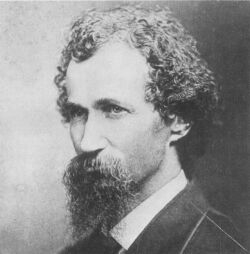
Thomas Henry Kendall, was an Australian author and bush poet, who was particularly known for his poems and tales set in a natural environment. He appears never to have used his first name — his three volumes of verse were all published under the name of "Henry Kendall".

John Joseph Cahill, also known as Joe Cahill or J. J. Cahill, was a long-serving New South Wales politician, railway worker, trade unionist and Labor Party Premier of New South Wales from 1952 to his death in 1959. Born the son of Irish migrants in Redfern, Cahill worked for the New South Wales Government Railways from the age of 16 before joining the Australian Labor Party. Being a prominent unionist organiser, including being dismissed for his role in the 1917 general strike, Cahill was elected to the Parliament of New South Wales for St George in 1925.
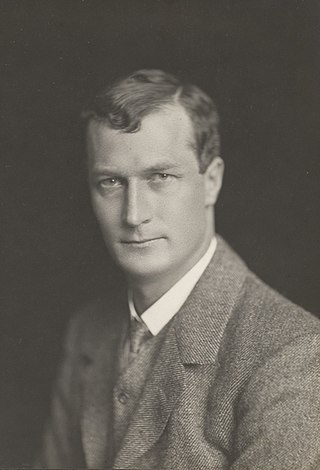
Hugh Raymond McCrae OBE was an Australian writer, noted for his poetry.
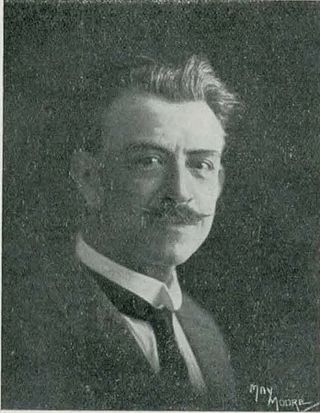
Alfred Francis Hill CMG OBE was an Australian-New Zealand composer, conductor and teacher.

Waverley Council is a Local government area in the eastern suburbs of Sydney, in the state of New South Wales, Australia. First incorporated on 16 June 1859 as the Municipality of Waverley, it is one of the oldest-surviving local government areas in New South Wales. Waverley is bounded by the Tasman Sea to the east, the Municipality of Woollahra to the north, and the City of Randwick in the south and west. The administrative centre of Waverley Council is located on Bondi Road in Bondi Junction in the Council Chambers on the corner of Waverley Park.

The Australian Institute of Architects, officially the Royal Australian Institute of Architects, is Australia's professional body for architects. Its members use the post-nominals FRAIA (Fellow), ARAIA and RAIA. The Institute supports 14,000 members across Australia, including 550 Australian members who are based in architectural roles across 40 countries outside Australia. SONA is the national student-membership body of the Australian Institute of Architects. EmAGN represents architectural professionals within 15 years of graduation, as part of the Australian Institute of Architects.

Thomas Rowe was a British-born architect, builder and goldminer who became one of Australia's leading architects of the Victorian era. He was also a politician, who was the first Mayor of Manly.

Sir George Stephenson Beeby KBE was an Australian politician, judge and author. He was one of the founders of the Labor Party in New South Wales, and represented the party in state parliament from 1907 to 1912. He fell out with the party and later served as an independent, a Nationalist, and a Progressive. He left parliament in 1920 to join the state arbitration court, and in 1926 was appointed to the Commonwealth Court of Conciliation and Arbitration. He was Chief Judge from 1939 until his retirement in 1941.

John Archibald McCallum was an Australian school teacher and politician, Senator for New South Wales.

The Sydney Mail was an Australian magazine published weekly in Sydney. It was the weekly edition of The Sydney Morning Herald newspaper and ran from 1860 to 1938.

Alfred Quill was an Australian soccer player and played for the Australia national team. Often considered one of the best soccer players in New South Wales, he scored 868 goals in all NSW competitions in his 24-year senior career.
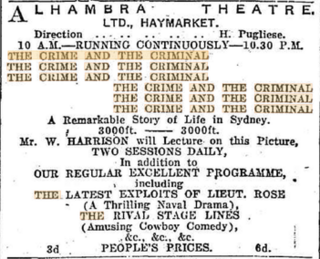
The Crime and the Criminal is a 1912 Australian silent film directed by Alfred Rolfe. It features the same railway collision as the climax in Do Men Love Women? (1912) which had come out only a few weeks prior. However the plots of the movies are different.

The Evening News was the first evening newspaper published in Sydney, New South Wales, Australia. It was published from 29 July 1867 to 21 March 1931. The Sunday edition was published as the Sunday News.

The Sydney Stock and Station Journal was a newspaper published in Sydney, New South Wales, Australia from 1888 to 1924. It was then published as Country Life and Stock and Station Journal from 1924 to 1978.
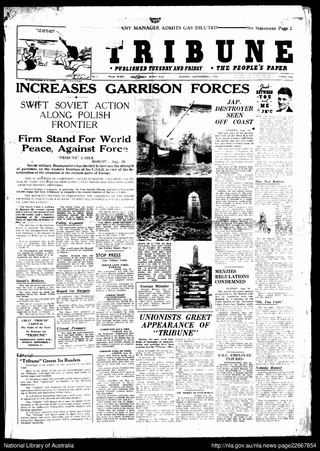
Tribune was the official newspaper of the Communist Party of Australia. It was published by the Central Committee of the Communist Party of Australia from 1939 to 1991. Initially it was subtitled as Tribune: The People's Paper. It was also published as the Qld Guardian, Guardian (Melbourne), Forward (Sydney). It had previously been published as The Australian Communist, (1920-1921) The Communist, (1921-1923) and the Workers' Weekly (1923-1939).
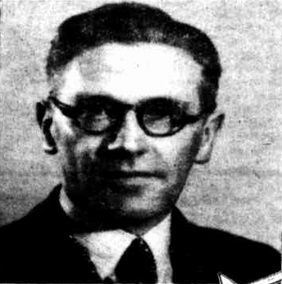
George Newton Kenworthy FRAIA, also known as G. N. Kenworthy or "Kennie", was a leading Sydney architect and Fellow of the Royal Australian Institute of Architects best associated for his work in partnership with Henry Eli White and for his building designs in the Art Deco, Streamline Moderne, Functionalist and Spanish Mission styles.
WillyRedstone was a French composer and conductor of light music who had a substantial career in England and Australia, where he became music editor for the ABC.
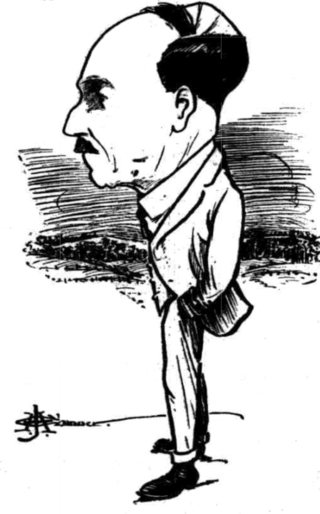
Edward Julius was Conservator of Forests for South Australia from 1924 until 1935.
References
- ↑ Andrew D. McCredie, 'Hill, Alfred Francis (1869–1960)', Australian Dictionary of Biography, National Centre of Biography, Australian National University, https://adb.anu.edu.au/biography/hill-alfred-francis-6667/text11495, published first in hardcopy 1983, accessed online 17 October 2023.
- ↑ "INDEPENDENT THEATRE". The Sydney Morning Herald . No. 29, 879. New South Wales, Australia. 7 October 1933. p. 10. Retrieved 17 October 2023– via National Library of Australia.
- ↑ ""THE SHIP OF HEAVEN."". The Sydney Morning Herald . No. 26, 822. New South Wales, Australia. 22 December 1923. p. 14. Retrieved 17 October 2023– via National Library of Australia.
- ↑ ""THE SHIP OF HEAVEN"". The Daily Telegraph . No. 13, 741. New South Wales, Australia. 22 December 1923. p. 21. Retrieved 17 October 2023– via National Library of Australia.
- ↑ "THE SHIP OF HEAVEN", The Home: An Australian Quarterly, 5 (1), Sydney: Art in Australia, 1 March 1924, nla.obj-383325446, retrieved 17 October 2023– via Trove
- ↑ "Independent Theatre Company Sydney, N.S.W.. (1930-1976)", Trove, 2008, retrieved 18 October 2023
- ↑ "Savoy Theatre (Sydney, NSW). (1929-1937)", Trove, 2020, retrieved 18 October 2023
- ↑ "A theatre fought hard". The Daily Telegraph . Vol. XII, no. 190. New South Wales, Australia. 1 November 1947. p. 16. Retrieved 17 October 2023– via National Library of Australia.
- ↑ Moore, William (1937). "The Development of Australian Drama". The Best Australian One Act Plays. p. xxv.
- ↑ ""The Ship of Heaven"". Smith's Weekly . Vol. XV, no. 35. New South Wales, Australia. 7 October 1933. p. 6. Retrieved 17 October 2023– via National Library of Australia.